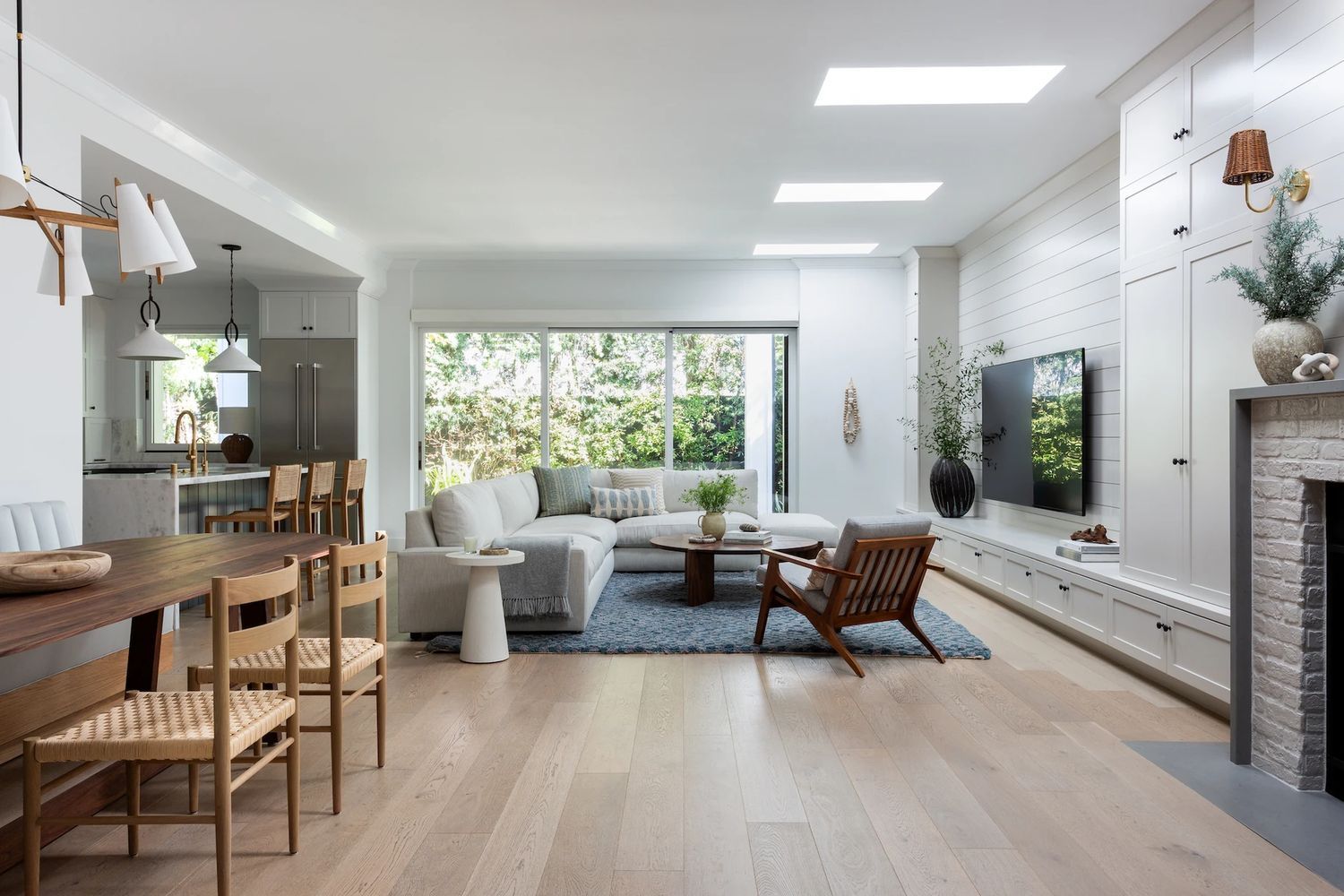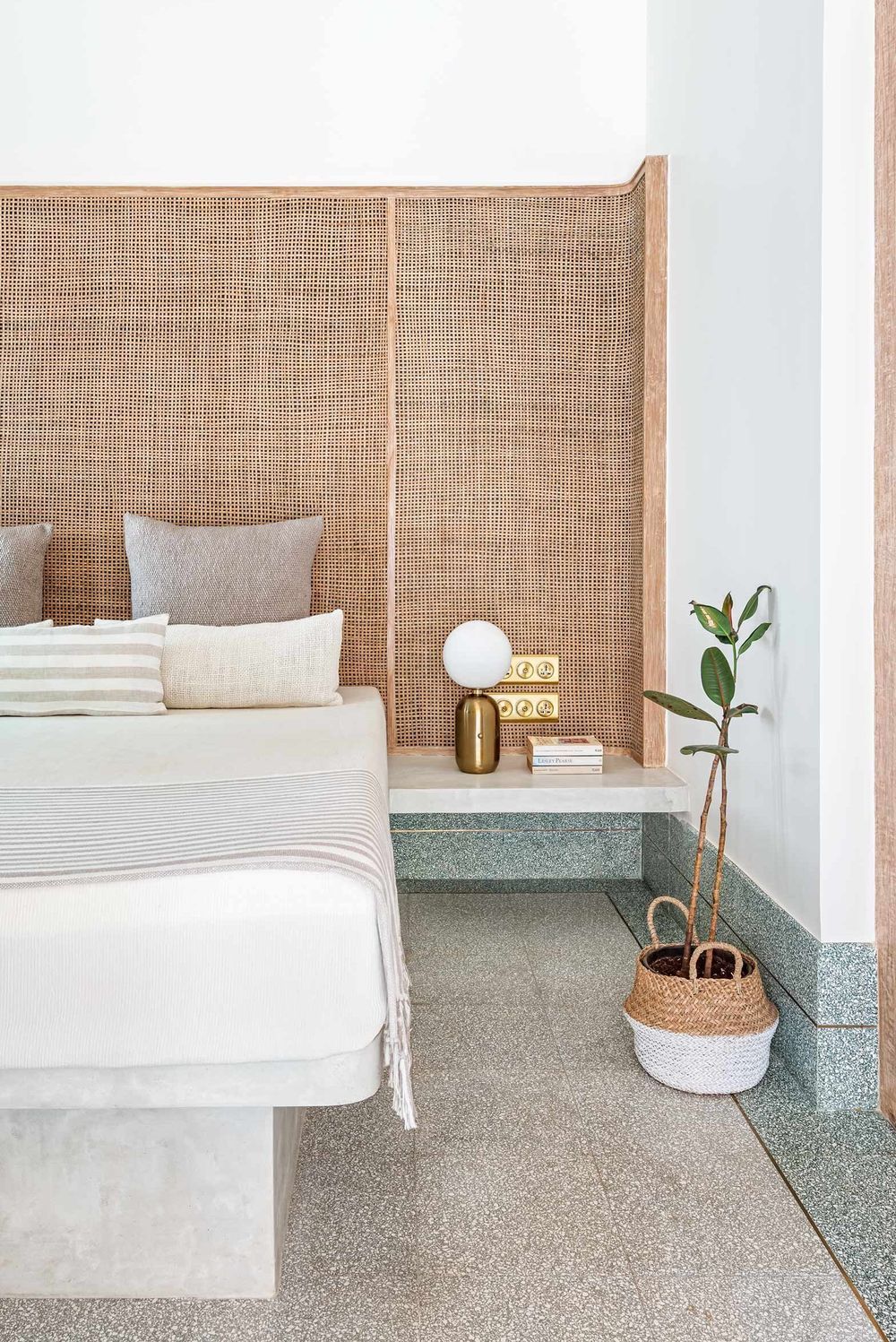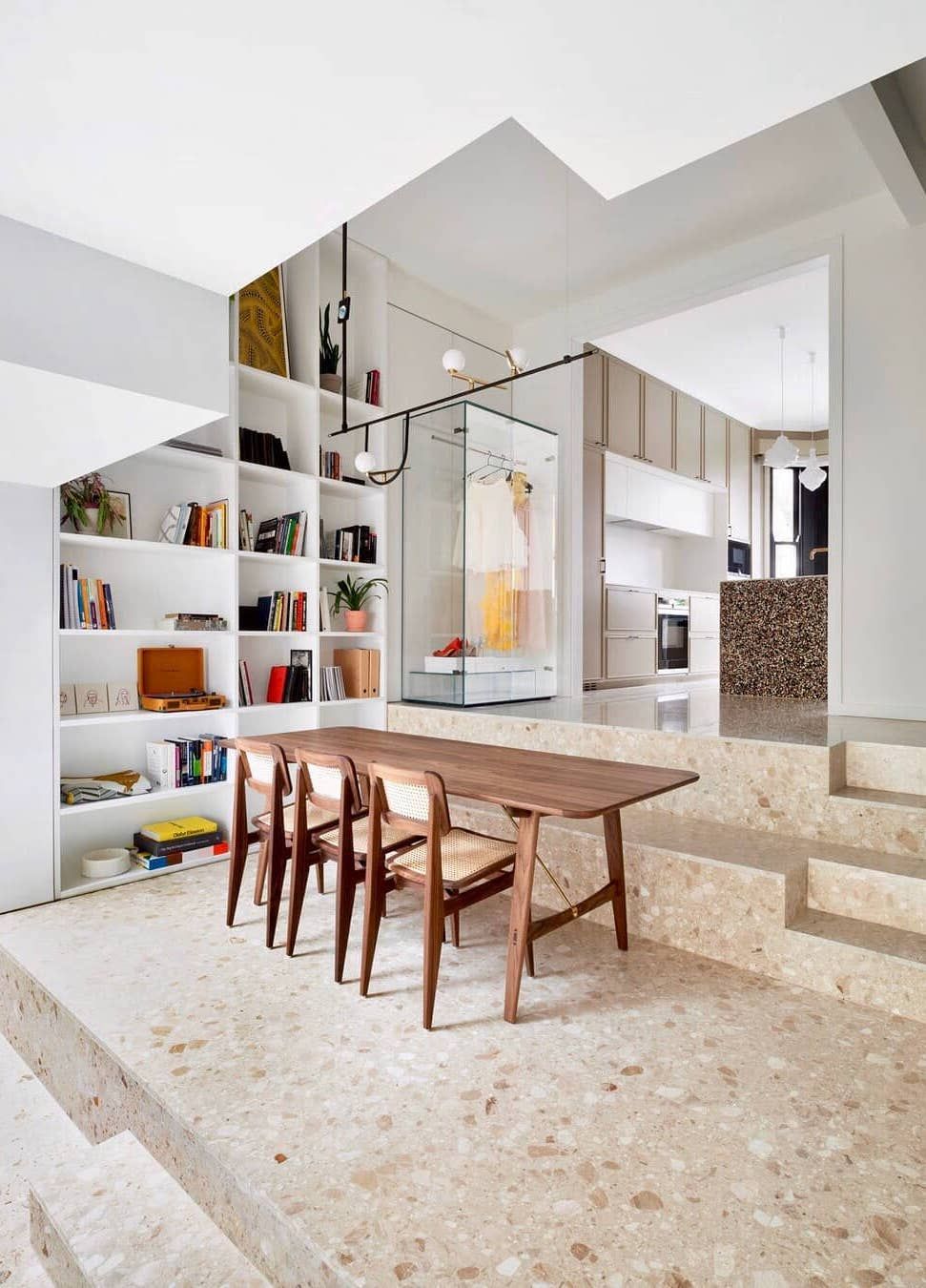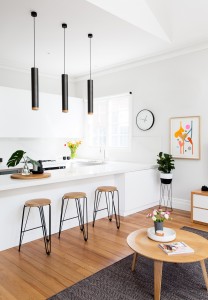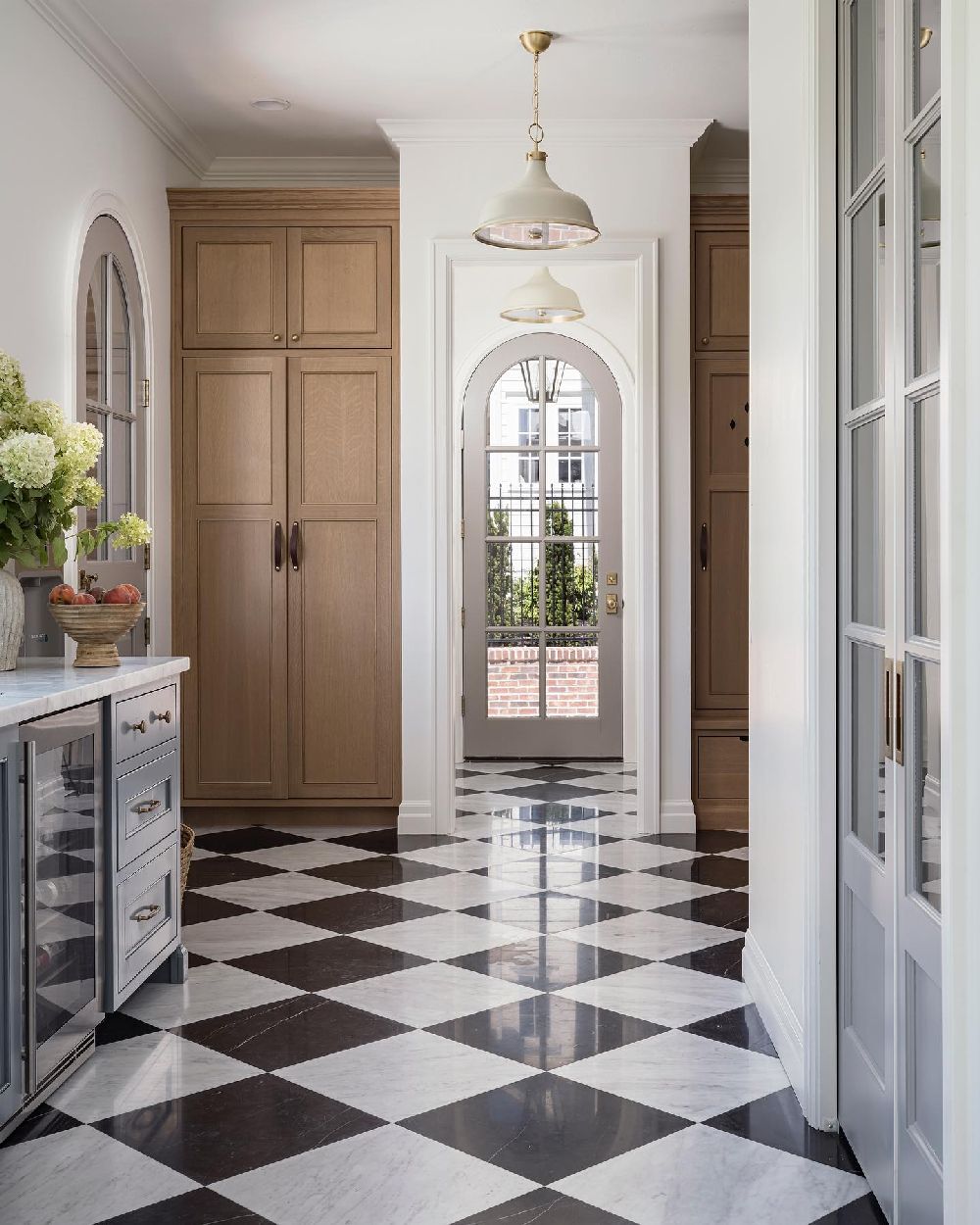The world of flooring options is vast! As interior designers, we all know that flooring has the power to transform a room and set the tone for the entire space. With countless styles, materials, and patterns to choose from, selecting the perfect flooring can be a daunting task.
When it comes to designing the perfect space, one of the most important aspects to consider is the type of flooring. Not only does flooring provide a foundation for a room’s design aesthetic, but it also serves as a functional element that can greatly impact the overall look and feel of a space.
With so many options on the market today, choosing the right flooring for your home can be overwhelming. From classic hardwood to trendy tiles, we will explore some popular types of flooring and provide interior design ideas and product examples to help you make the best decision for your space. We hope to help you make an informed decision for your next design project.
1. Hardwood Flooring (e.g., oak, maple, cherry)
Hardwood floors are solid wood planks made from various tree species. Hardwood flooring is a timeless and classic choice for any interior space. Not only does it add warmth and character to a room, but it also has a high level of durability and is easy to maintain. With many wood species, stains, and finishes to choose from, hardwood flooring can fit into any design aesthetic. Consider pairing dark-stained hardwood with light walls and furniture for a modern and sophisticated look, or opt for a natural finish with warm tones for a more rustic and cozy feel.
Pros: Timeless aesthetic, can be refinished multiple times, adds value to the home.
Cons: Expensive, susceptible to scratches and dents, can warp in humid conditions.
2. Laminate Flooring
Laminate flooring is a budget-friendly option that can mimic the look of hardwood, tile, or even stone. It is a synthetic product made to look like wood or stone, composed of multiple layers.
Laminate is an excellent choice for high-traffic areas and is easy to maintain. Laminate can fit into any interior design aesthetic.
Pros: Affordable, easy to install, resistant to scratches and fading.
Cons: Cannot be refinished, may not add as much value as hardwood, can feel less authentic.
3. Tile Flooring (e.g., ceramic, porcelain, natural stone)
Tile flooring is a durable and versatile option that is perfect for high-traffic areas such as bathrooms and kitchens. Custom colors, patterns, and finishes are available, so tile can add a unique aspect to any interior space. From sleek and modern to intricate and traditional, there are endless design possibilities with tile.
Durable flooring made from fired clay or natural stone, available in various styles and finishes.
Pros: Water-resistant, easy to clean, long-lasting, great for high-moisture areas.
Cons: Can be cold and hard underfoot, grout lines may stain, installation can be labor-intensive.
4. Vinyl Flooring (e.g., luxury vinyl plank, vinyl sheet)
Synthetic flooring that mimics the look of wood or stone, available in planks or sheets.
Pros: Affordable, water-resistant, comfortable underfoot, easy to maintain.
Cons: Can be less durable than other options, may emit VOCs, not as eco-friendly.
5. Carpet
Carpet is a popular choice for bedrooms, living rooms, and other areas where comfort and coziness are a priority. It comes in a variety of colors, patterns, and textures, making it a great option for adding visual interest to a space. The softness and warmth that carpet provides can also make a room feel more inviting and comfortable.
Soft flooring made from woven fibers, available in various styles, colors, and textures.
Pros: Comfortable and warm, sound-absorbing, available in many designs.
Cons: Stains easily, requires regular cleaning, can harbor allergens.
6. Engineered Wood Flooring
Made of a thin veneer of hardwood over layers of plywood or high-density fiberboard.
Pros: More stable than solid wood, can be installed in moisture-prone areas, available in various styles.
Cons: Limited refinishing options, can be less durable than solid hardwood.
7. Bamboo Flooring
Made from bamboo grass, offering a unique look and eco-friendly option.
Pros: Sustainable, durable, and resistant to moisture.
Cons: Can be prone to scratching, quality varies widely, may not be as widely available.
8. Cork Flooring
Made from the bark of cork oak trees, providing a unique texture and eco-friendly option.
Pros: Comfortable underfoot, sound-absorbing, resistant to mold and mildew.
Cons: Can be damaged by water, may fade in sunlight, requires sealing.
9. Linoleum Flooring
Made from natural materials like linseed oil, cork dust, and wood flour, available in sheets or tiles.
Pros: Eco-friendly, durable, and easy to clean.
Cons: Can be susceptible to scratches, may require periodic waxing, limited design options.
10. Concrete Flooring (polished or stained)
A versatile flooring option that can be stained, polished, or stamped for various looks.
Pros: Extremely durable, low maintenance, can be customized.
Cons: Can be cold and hard, may crack over time, requires professional installation for best results.
11. Rubber Flooring
Made from recycled rubber, often used in gyms and play areas.
Pros: Durable, slip-resistant, comfortable underfoot, easy to clean.
Cons: Limited aesthetic appeal, can emit rubber odor, may be more expensive than other options.
12. Terrazzo Flooring
Terrazzo is a composite material made from chips of marble, quartz, granite, or glass, set in a cement or resin base. Its origins can be traced to the Venetian artisans of the 15th century, who used leftover marble chips from their stonework to create a durable and decorative flooring material.
The name “terrazzo” comes from the Italian word for “terrace,” as the material was initially used for outdoor terraces. In the early 20th century, terrazzo gained significant popularity in the United States, especially in public buildings, schools, and commercial spaces.
Pros: Highly durable, customizable, and unique designs.
Cons: Expensive, requires professional installation, can be slippery when wet.
13. Slate Flooring
A natural stone with a unique texture and color variations, often used in kitchens and bathrooms.
Pros: Durable, water-resistant, and adds natural beauty.
Cons: Can be expensive, may require sealing, can be cold and hard underfoot.
14. Travertine Flooring
A type of limestone with a unique texture, often used in outdoor and indoor settings.
Pros: Elegant appearance, durable, and available in various finishes.
Cons: Porous and requires sealing, can be slippery, may be expensive.
15. Marble Flooring
A luxurious natural stone known for its beauty and elegance.
Pros: Timeless aesthetic, adds value, and is durable.
Cons: Expensive, can scratch and stain easily, requires regular maintenance.
16. Granite Flooring
Granite flooring consists of natural stone tiles made from granite, known for its durability and unique patterns. It is often used in high-end homes and commercial spaces.
Pros: Extremely durable and resistant to scratches and heat. Unique appearance with a variety of colors and patterns. Low maintenance; easy to clean with mild soap and water.
Cons: Can be expensive, both in material and installation. Cold and hard underfoot, which may not be comfortable for all homeowners. Requires sealing to prevent staining and moisture absorption.
17. Luxury Vinyl Tile (LVT)
LVT is a synthetic flooring option that mimics the look of natural materials like wood or stone. It is available in planks or tiles and is popular for its versatility.
Pros: Water-resistant and suitable for high-moisture areas like kitchens and bathrooms. Soft underfoot and quieter than hard surfaces. Cost-effective and easy to install, often as a DIY project.
Cons: Can be less durable than natural stone or hardwood. May fade over time with prolonged exposure to sunlight. Some lower-quality options may emit VOCs (volatile organic compounds).
18. Engineered Stone Flooring
Engineered stone flooring is made from a blend of natural stone and resin, providing a durable and aesthetically pleasing surface that resembles natural stone.
Pros: Highly durable and resistant to scratches and stains. Available in tons of colors and patterns. Generally easier to install than natural stone.
Cons: Can be more expensive than other synthetic options. May require special cleaning products to maintain its appearance. Not as heat-resistant as natural stone.
19. Reclaimed Wood Flooring
Reclaimed wood flooring is made from salvaged wood, often from old barns or buildings, giving it a unique character and history.
Pros: Environmentally friendly choice, as it repurposes existing materials. Unique aesthetic with rich textures and colors. Can add value to a home due to its distinctive look.
Cons: Can be more expensive due to sourcing and processing. May require more maintenance to prevent warping or damage. Limited availability and may be harder to match if repairs are needed.
20. Epoxy Flooring
Epoxy flooring is a resin-based flooring system that creates a seamless, durable surface, often used in garages, basements, and commercial spaces.
Pros: Highly durable and resistant to chemicals, stains, and moisture. Easy to clean and maintain; often just requires mopping.
Cons: Can be slippery when wet, requiring caution. Installation can be complex and may require professional help. May emit strong odors during installation, necessitating proper ventilation.
The type of flooring you choose for your interior space can greatly impact the overall look and feel of the room. Whether you opt for the warmth of hardwood, the comfort of carpet, the durability of tile, or the versatility of laminate, there is something for every style and budget. Consider these popular options and their corresponding product examples to find the perfect flooring for your home.
